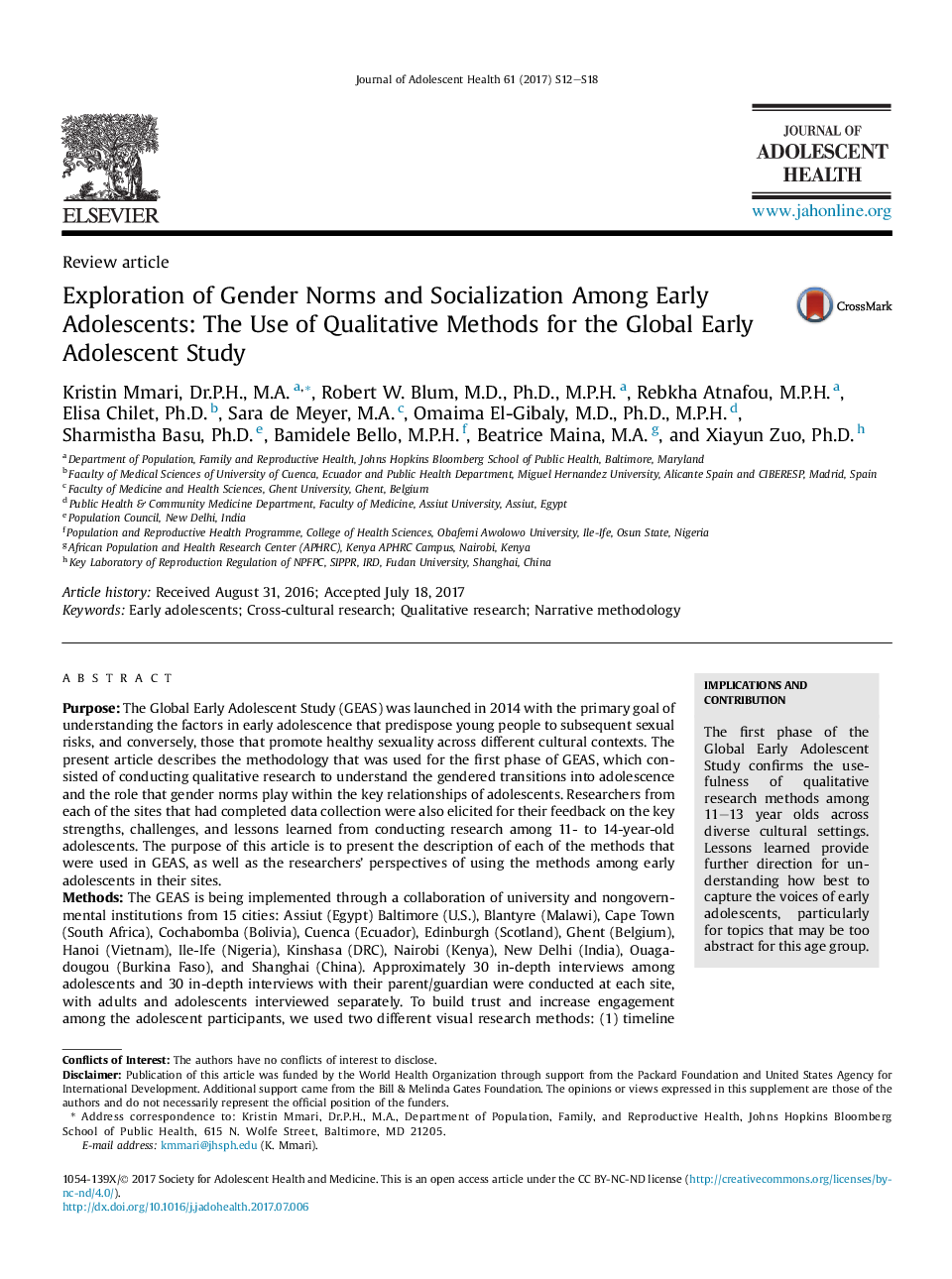| کد مقاله | کد نشریه | سال انتشار | مقاله انگلیسی | نسخه تمام متن |
|---|---|---|---|---|
| 5121199 | 1378290 | 2017 | 7 صفحه PDF | دانلود رایگان |
PurposeThe Global Early Adolescent Study (GEAS) was launched in 2014 with the primary goal of understanding the factors in early adolescence that predispose young people to subsequent sexual risks, and conversely, those that promote healthy sexuality across different cultural contexts. The present article describes the methodology that was used for the first phase of GEAS, which consisted of conducting qualitative research to understand the gendered transitions into adolescence and the role that gender norms play within the key relationships of adolescents. Researchers from each of the sites that had completed data collection were also elicited for their feedback on the key strengths, challenges, and lessons learned from conducting research among 11- to 14-year-old adolescents. The purpose of this article is to present the description of each of the methods that were used in GEAS, as well as the researchers' perspectives of using the methods among early adolescents in their sites.MethodsThe GEAS is being implemented through a collaboration of university and nongovernmental institutions from 15 cities: Assiut (Egypt) Baltimore (U.S.), Blantyre (Malawi), Cape Town (South Africa), Cochabomba (Bolivia), Cuenca (Ecuador), Edinburgh (Scotland), Ghent (Belgium), Hanoi (Vietnam), Ile-Ife (Nigeria), Kinshasa (DRC), Nairobi (Kenya), New Delhi (India), Ouagadougou (Burkina Faso), and Shanghai (China). Approximately 30 in-depth interviews among adolescents and 30 in-depth interviews with their parent/guardian were conducted at each site, with adults and adolescents interviewed separately. To build trust and increase engagement among the adolescent participants, we used two different visual research methods: (1) timeline exercise which was small group based and (2) the Venn diagram exercise which was conducted individually and used at the start of the in-depth interview.ResultsThe visual aspects of both the timeline and the Venn diagrams not only helped to produce data for the purposes of the study, but also were a successful way of engaging the adolescent participants across sites. While the narrative interviews produced extremely rich data, researchers did notice that there were a few challenges among the younger adolescents. Challenges were related to the length of the interview, comprehension of questions, as some of the questions were either too abstract or asked adolescents about an experience they had not yet had and therefore could not address or articulate.ConclusionsConducting the first phase of GEAS revealed important insights for research with participants who are in this developmental phase of early adolescence. Methods that involve greater engagement and those that are visual were shown to work well irrespective of the cultural setting.
Journal: Journal of Adolescent Health - Volume 61, Issue 4, Supplement, October 2017, Pages S12-S18
